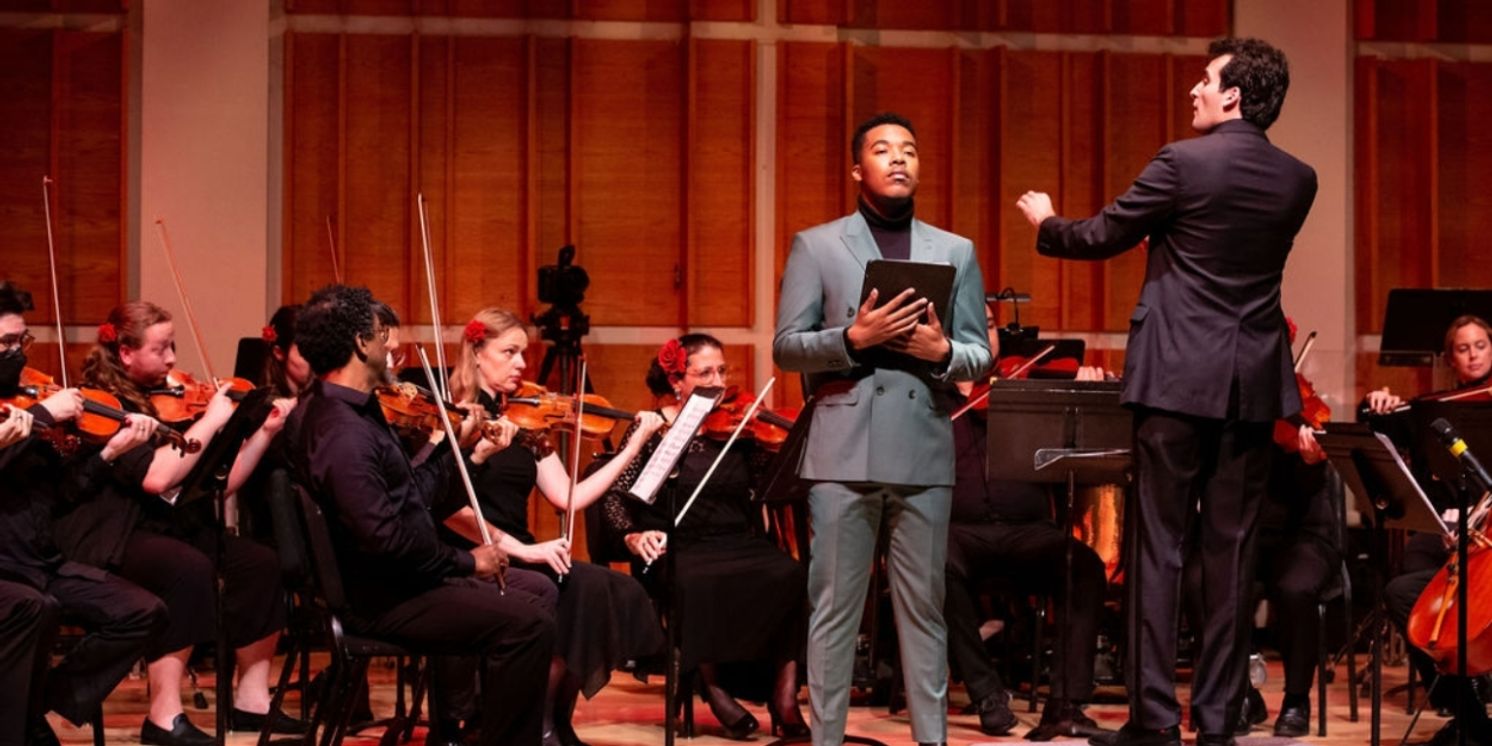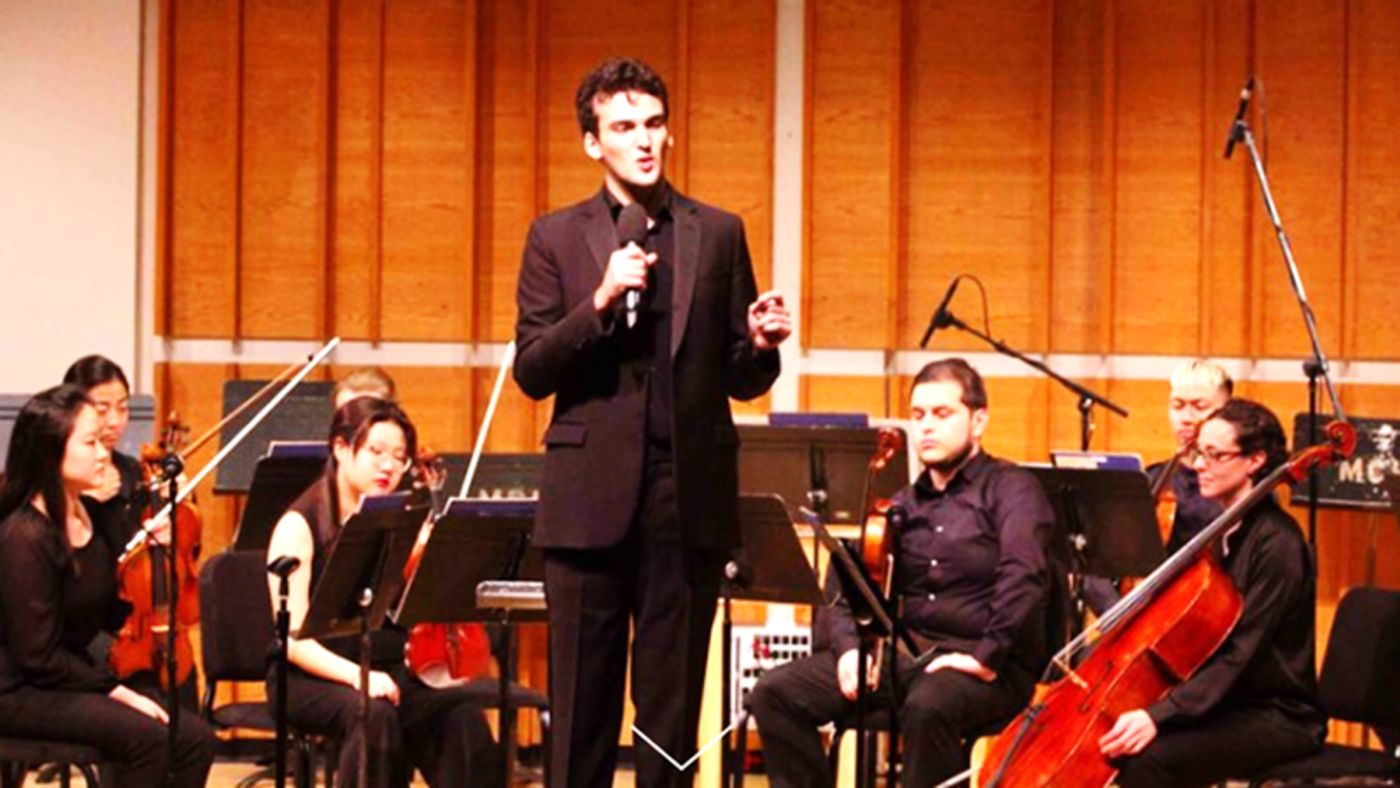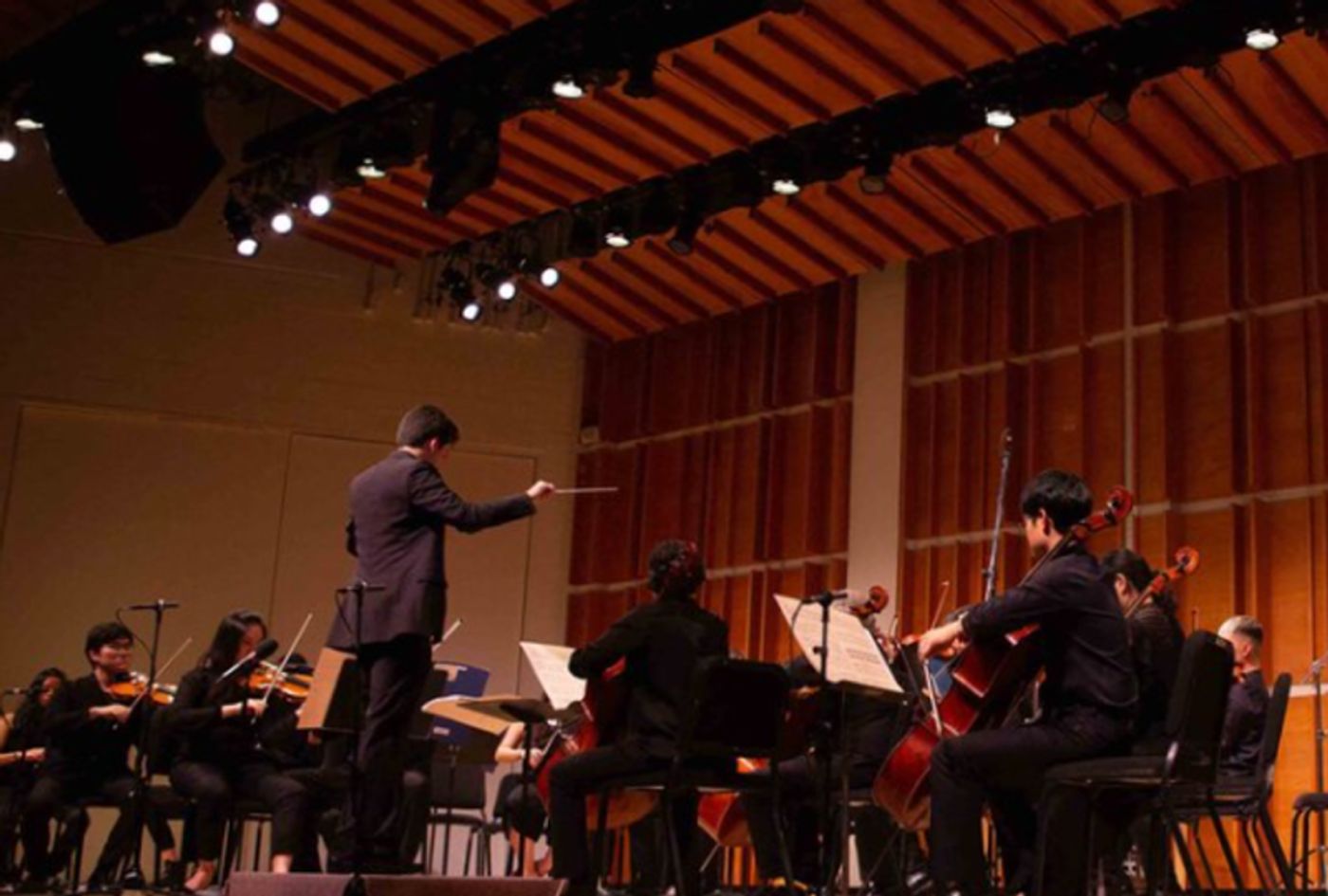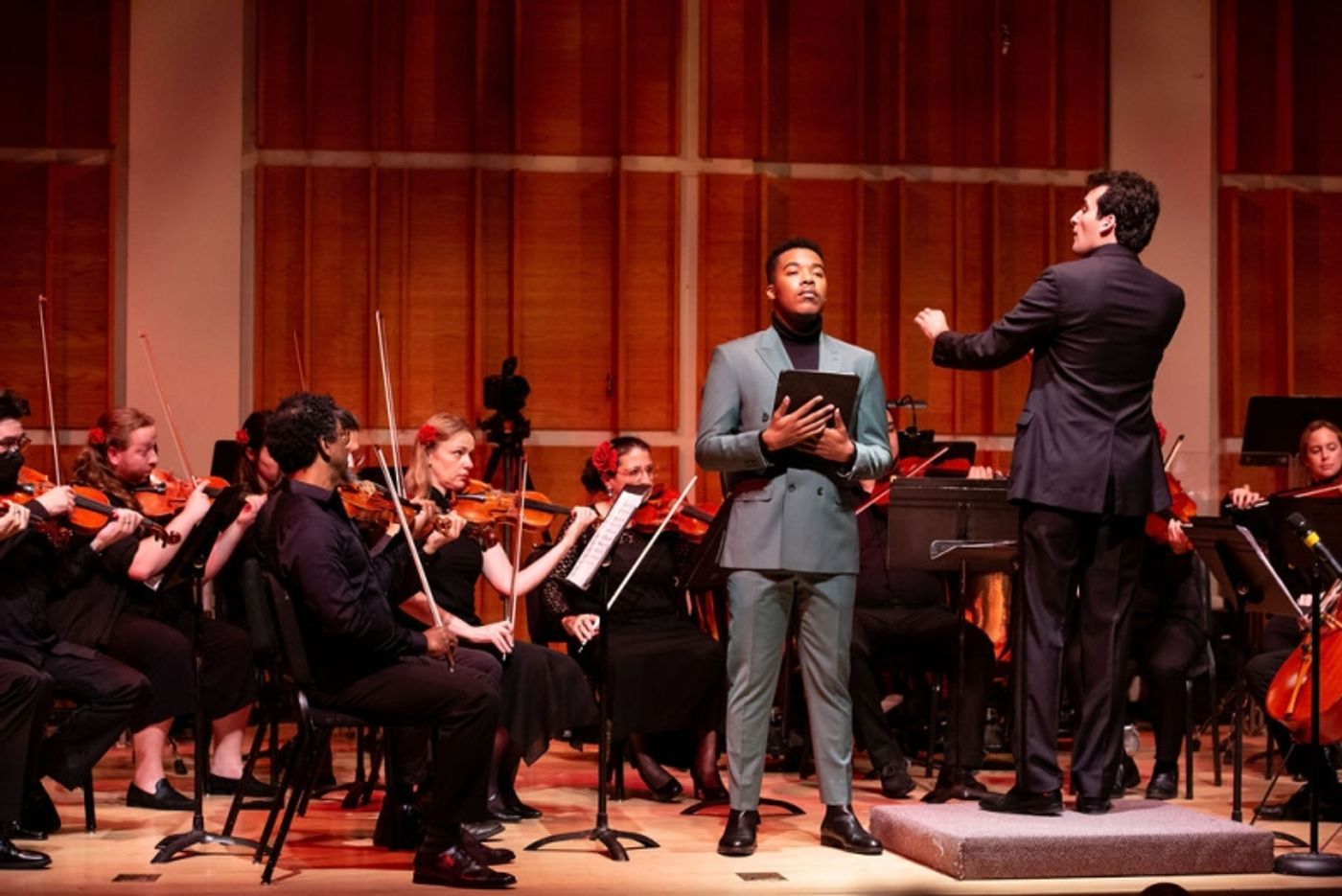Review: PARLANDO CHAMBER ORCHESTRA: HEROINES AND HERETICS at Merkin Hall
Parlando examines the eternal feminine through three of history's most eternally fascinating women: Hildgard Von Bingen, Joan of Arc and Carmen!

Conductor Ian Niederhoffer likes to ignore convention. Over the last few years, his Parlando Chamber Orchestra has established itself as a serious player on the New York classical scene through its presentations of lesser-known, and modern(ish) pieces. The conductor and founder of Parlando, Niederhoffer has displayed a knack for cultivating and curating unique and fascinating programs. This week's concert at Merkin Hall (on Marathon Sunday!) was entitled "Heroines and Heretics" and featured pieces that focused on some of musical history's most important women: 11th century, German Benedictine abbess (and polymath, writer, composer, philosopher, mystic, visionary, yada, yada, yada...) Hildegard von Bingen; the patron saint of France, the Maid of Orléans, Joan of Arc (who has been the subject of over 500 musical compositions); and the most popular bad girl in the operatic repertoire: Carmen.

As is his tradition, Maestro Niederhoffer began the concert with brief details regarding the featured pieces. His audience has come to expect and look forward to the delightful elucidations about the pieces, as Niederhoffer possesses a relaxed, natural, story-telling gift that puts the audience at ease. He does not expound, delivering methodical, detailed, scholarly explanations, but rather straight-forward, comprehensible and entertaining, almost anecdotal insights. It is an extremely wise and useful convention on his part, as his programs often include some very challenging pieces. (Parlando!)
And this program was no exception.
On the surface, Bingen, Joan of Arc, and Carmen might seem to have little in common, but Niederhoffer neatly tied them together explaining that their uniqueness and exceptionalism resulted in each of their different struggles and the corresponding hostility (misogyny) they faced - Hildgard and Joan in life, Carmen in art.
Hildegard von Bingen's "Rex noster promptus est" began the program. Usually heard in vocal arrangement, the Parlando version was a stunning, austere, string arrangement that produced an almost immediate hypnotic effect. The piece was written as a Responsory for the Feast of the Holy Innocents, a Christian feast in remembrance of the massacre of newborn children in Bethlehem by King Herod, in his attempt to kill the infant Jesus. The slain children were regarded by the early church as the first martyrs, hence the somber, contemplative nature of the work.
 When performed by strings (as opposed to voices) the work possesses less of a "religious chant" feeling and a more secular quality. The work begins with a droning note below the melody that immediately invokes an almost middle eastern flavor. One by one, a cello, then a second cello then a double bass join, passing the melody and deepening the texture and resonance. This reviewer had never heard this particular arrangement and reached out to Maestro Niederhoffer to ask the province of the arrangement and not surprisingly the conductor provided a pithy response: "the original arrangement was by Marianne Richert Pfau, but we flipped some of the octaves and instrumentation ourselves. We actually experimented a bit in rehearsals to see what would be most effective for the bass drones. For some of the repetitions we did harmonics, and others we played with open strings or different octaves."
When performed by strings (as opposed to voices) the work possesses less of a "religious chant" feeling and a more secular quality. The work begins with a droning note below the melody that immediately invokes an almost middle eastern flavor. One by one, a cello, then a second cello then a double bass join, passing the melody and deepening the texture and resonance. This reviewer had never heard this particular arrangement and reached out to Maestro Niederhoffer to ask the province of the arrangement and not surprisingly the conductor provided a pithy response: "the original arrangement was by Marianne Richert Pfau, but we flipped some of the octaves and instrumentation ourselves. We actually experimented a bit in rehearsals to see what would be most effective for the bass drones. For some of the repetitions we did harmonics, and others we played with open strings or different octaves."
And Parlando made it their own. Under Niederhoffer's supple but languid hand, the piece took on a transcendental, evocative and soul-stirring quality.
The second piece in the program was a composition by African-American composer Julius Eastman. The score for the piece was lost after the composer's repeated battles with drug addiction left him homeless and his estate in chaos. Cellist Clarice Jensen painstakingly re-constructed a transcription of the work from an archival video of the work's only live performance in 1981. In the original format, composer Eastman delivered a maniacal, sermon-like intro to the music (composed for 10 cellos). The prelude was reportedly a complete improvisation, featuring the names of the saints (and Archangel Michael) whom Joan of Arc invoked during her trial. Whether or not it was actually intended as a note-for-note melodic composition is not clear. Nonetheless, all subsequent performances have included the prelude as the composer initially delivered it.

"When they question you, speak boldly," St. Joan claimed they told her, and tenor Aaron Crouch did just that. His powerful and passionate rendition of the prelude gave gravitas to the composers somewhat haphazard lyrics (full disclosure: this reviewer had heard the prelude only once before and hoped never to hear it again). However, it was clear that in a live listening, the piece is indeed far more impactfull and impressive than on recording, Through sheer will and a great deal of repetition, the composer condensed St. Joan's legendary trial, of which hundreds of pages of documentation exist, into just a few lines. Mr. Crouch delivered the prelude with great reverence and solemnity and his clarion clear tenor rang out triumphantly.
The prelude typically dissolves into the cello section it proceeds, but Maestro Niederhoffer cleverly went directly into the final work of the concert Rodion Shchedrin's Carmen Suite. Had the prelude been a more well-known work, the extremely cool juxtaposition of the two pieces would have been more apparent to the audience (but it was a fairly ingenious decision nonetheless!).
The Shchedrin Carmen Suite was composed as ballet music for his wife prima ballerina Maya Plisetskaya (who, as Niederhoffer explained, had first asked Dimitri Shostakovich then Arman Khachaturian, only to have both tell her to use her husband!). Of all the Carmen Suites (and there are many) this is by far the most original, in scoring and audacity.
The composer brilliantly "suggests" rather that directly states musical themes throughout the score. Bits and pieces of the famed arias are heard and then disappear, allowing the listeners' brains to fill in the gaps or continue the melody lines in their own imaginations. Often, the underscoring is presented without the melodic line, giving the listener just a hint of something and making them sit up and listen - and THINK. Notably, Shchedrin uses a great deal of percussion and focuses on the rhythmic elements of the score more so than the famous melodies. This requires the composer to maintain a very clear pulse and Maestro Niederhoffer was up to the challenge - as was his especially fine percussion ensemble. The listener is treated to most of the big melodies albeit usually in truncated forms, but certainly enough to have them humming along.
Yes, there were a few nitpicks of intonation and a few moments where pizzicatos were not the most crisp, but the blemishes were too small and inconsequential to dwell on. Maestro Niederhoffer has once again shown his impressive and powerful command of his forces in another challenging program. We look forward with great anticipation to Parlando's next offering.
Peter Danish
Reader Reviews
Videos

